Coffee brewing through the ages
The first use of the coffee plant was gathering the fruit and mashing this up with fat to create a rough cake, eaten as a high energy food with the added energizing effect of caffeine more than taste. At around 1000 AD there is evidence of making a drink from the whole fruit, the seed and outer husk. Only in the 13thcentury did people begin to roast the seeds or coffee beans.

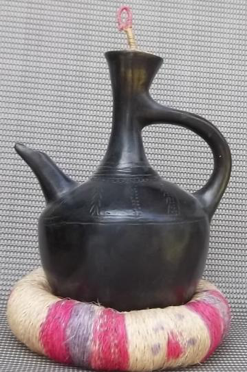
The modern version of roasted coffee originated in Arabia during the 13th century, the popularity of coffee spread to the Near East, Turkey and west to Europe and North America in the seventeenth century. Coffee preparation was simply mixing water with ground coffee and bringing to the boil in a suitable pot (resistant to heat/ fire and with a spout). To help reduce the amount of grounds in the coffee, vessels were shaped with a wide bottom to collect the grounds and a long spout (cf. the Arabic dallah or Ethiopian jebena). The Turkish cezve also has a wider bottom to collect the grounds but with a smaller spout and a long handle for ease of pouring)
The first European coffee was introduced from Ottoman Turks and the style of preparation was similar to today’s Turkish coffee, that is ground coffee steeped in boiled water, made in a pan. With care a good brewed coffee can be produced but there was always the issue of sediment.
Developments in the preparation of coffee in Europe started with methods to remove or reduce sediment from the brew. During the eighteenth century in France ground coffee was infused in a fine linen bag to reduce the amount of sediment. Also, at about this time preparation methods were changing in preference for slightly cooler hot water temperatures as this was found to keep the taste of the coffee better. By using hot rather that boiling water the cafestol and kahweol oils released in the roasting process are better preserved in the finished cup of coffee.
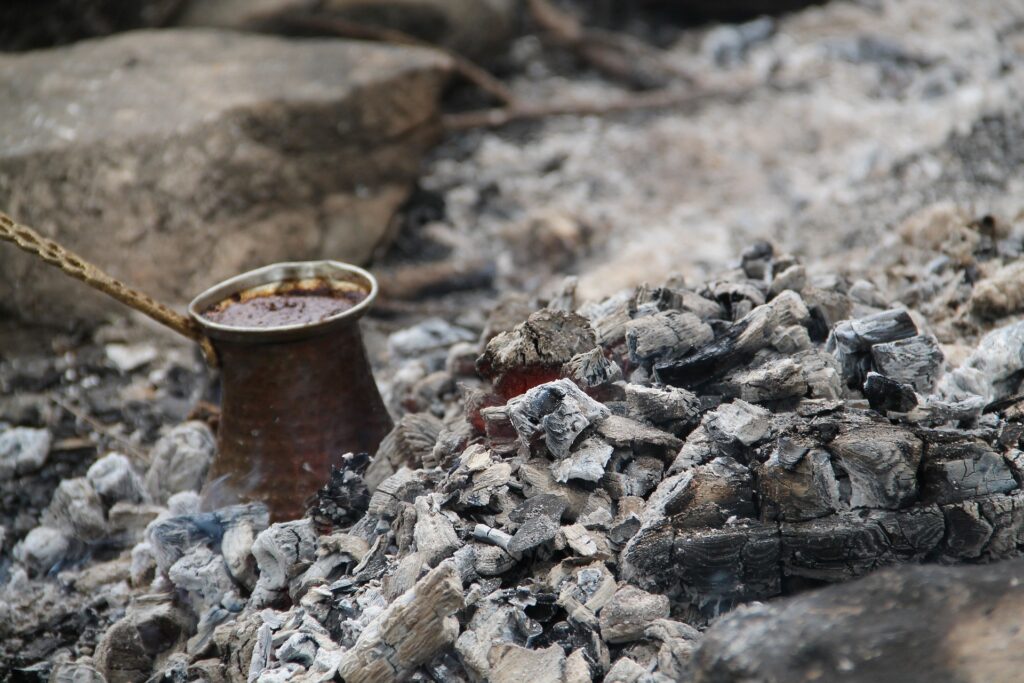

In around 1800 the issue of sediment was addressed with the invention of the first rudimentary percolator by Jean Baptiste de Belloy, Archbishop of Paris. Instead of steeping coffee in water, the water was passed through coffee in the top of a two-chambered vessel, the coffee liquid then dripped through a filter into a lower chamber. This method was improved on by an American, Benjamin Thompson, who added a jacket device around the coffee grounds to keep them compressed and so aiding percolation of water in addition to retaining more heat in the coffee. Benjamin Thompson was also an early proponent of adding cream or milk to coffee. Many similar devices were developed across Europe and North America during this time. For example, a 3 chambered pot was developed where the whole preparation process could be made in the same vessel; water was placed in the bottom chamber and boiled on a stove, the pot was then flipped over so that the water was now at the top. Once flipped, the hot water filters through a middle amber of ground coffee and into a third chamber from where the made coffee is poured out; originating in France, it became most popular in Italy where it is still used and known as the Neapolitana.
In 1819 Frenchman Joseph-Henry-Marie Laurens patented an improved form of percolating coffee pot that uses pressure (a pumping percolator) to move water and not just gravity. This percolator comprised of a 2 chambered pot, water in the bottom chamber was heated and when it boiled it was forced up a tube into an upper chamber of ground coffee. The idea being that the hot water dripped through the coffee and returned to the bottom chamber as coffee. This type of pumping percolator has been improved over the years, however, the resultant coffee generally lacks flavour as the natural oils of the ground coffee is not efficiently transferred to the liquid.
In the 1830’s a new type of preparation method emerged in Germany, the vacuum coffee pot, a first patent for this type of coffee preparation was patented in France by Mme. Jeanne Richard in 1838. A series of improved versions of this idea developed across Europe an these consisted of 2 glass globes, one above the other, connected by a tube. Water is put in the bottom globe and ground coffee in the other, the water is heated and this expands via vapour pressure and rises through the tube into the other globe through a filter. The coffee grounds and hot water mix in the upper globe. Once the water level in the base globe is below the level of the tube no more water rises and the apparatus can be removed from the heat source. As the water vapour cools a vacuum is formed in the base globe and the liquid coffee is drawn back through the filter down into the base globe which then is removed from the rest of the apparatus to serve the coffee. This style of coffee maker is still available today as well as other versions of coffee maker using the same principle.
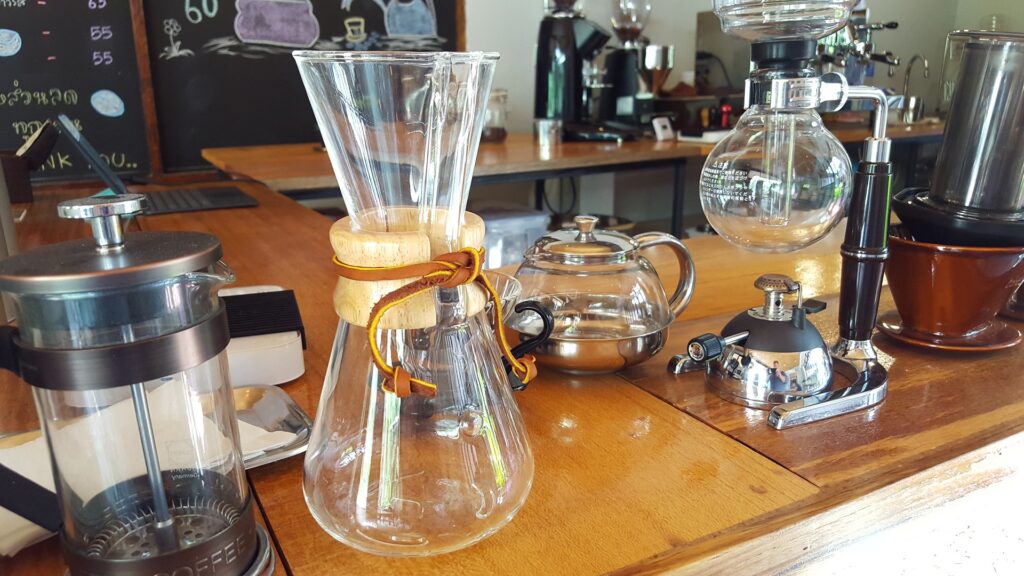

In 1848 in Britain Elizabeth Dakin invented a forerunner of the cafetiere coffee maker that used a cylinder within a coffee pot to mix the coffee grounds in, once brewed a circular metal plate at the base of the cylinder was drawn up using a screw to remove the coffee grounds to the base of the cylinder.
At about this time in France a coffee pot emerged using a fine mesh screen attached to a plunger, which worked as a rudimentary cafetiere. The cafetiere was made possible by improved metal working technology to manufacture fine mesh. In 1852 in France Messrs. Mayer and Delforge patented this type of cafetiere, however, there remained the problem of coffee grinds getting into the coffee around the edges of the mesh. As late as 1930, Italians Attilio Calimani and Giulio Moneta redesigned the plunger to include a spring around the circumference of the mesh, which greatly reduced the amount of coffee grounds getting into the final drink. The last significant cafetiere innovation came in 1959 when a Swiss Fallero Bondanini extended the mesh of the filter to overlap the edges of the spring; the cafetière à piston filtrant was born.
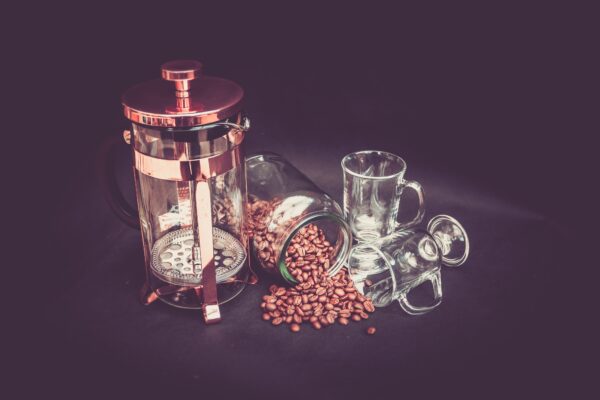

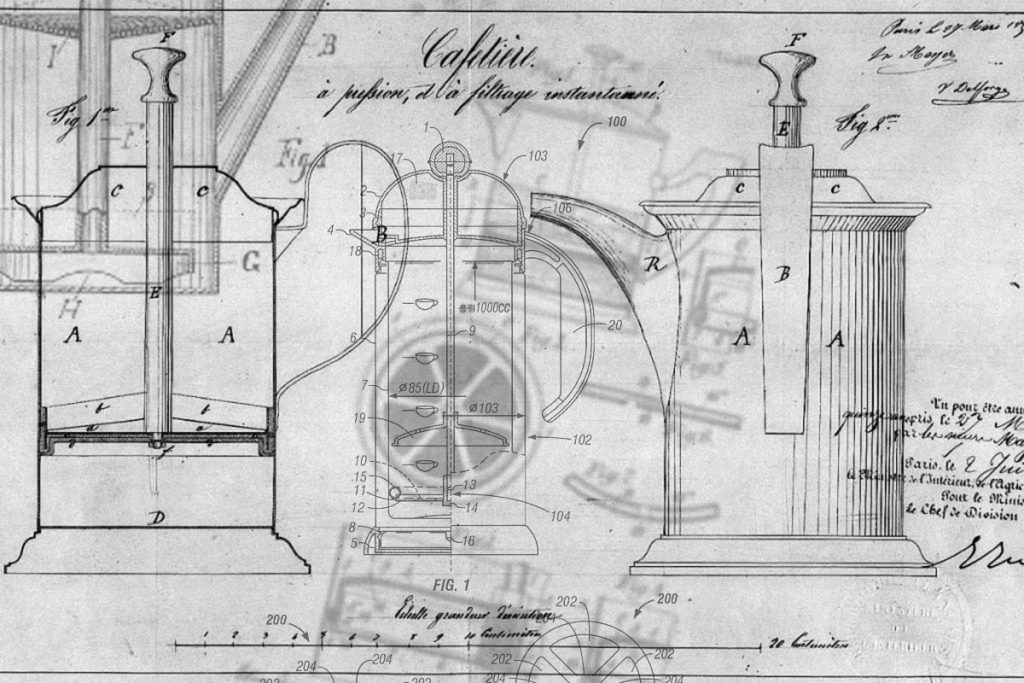
1 Comment. Leave new
very interesting article